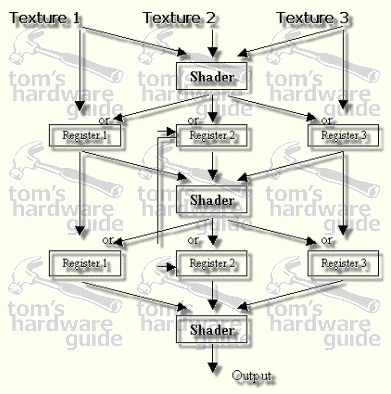ATi's New Radeon - Smart Technology Meets Brute Force
C - The Pixel Tapestry Architecture
What NVIDIA calls 'NSR ', the NVIDIA Shading Rasterizer, is called 'Pixel Tapestry' by ATi. The main difference between the two is, that ATi's solution offers two rendering pipelines with three texture units each, unlike the four pipelines with two texture units each found in NVIDIA's GeForce2 GTS chip.
The results is that Radeon has only got a pixel fill rate of 366 Mpixel/s while GeForce2 GTS claims 800 Mpixel/s. It's a lot closer when you look at the texel fill rate, because here Radeon can supply 1,100 Mtexel/s and GeForceclaims 1,600 Mtexel/s. Keeping in mind the impact of HyperZ makes Radeon's effective fill rates go up or GeForce2 GTS' fill rates go down, whichever you prefer.
It is a fact that Radeon is not able to look as good if a game is only using two textures per pixel, because then one texture unit per pipeline will be idle, while GeForce2 GTS gets a bit more in trouble if 3 textures are used for each pixel, since then it will have idle texture units while Radeon won't. Future games will show whose solution is better, but from a raw force point of view GeForce2 GTS seems clearly in front.
Get Tom's Hardware's best news and in-depth reviews, straight to your inbox.
Current page: C - The Pixel Tapestry Architecture
Prev Page Fill Rate And Memory Bandwidth - They Belong Together! Continued Next Page The Pixel Tapestry Architecture, Continued